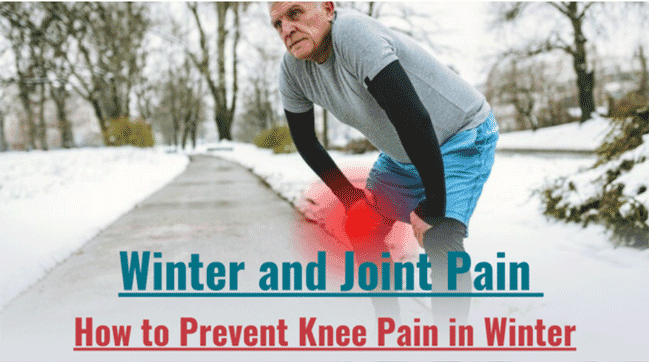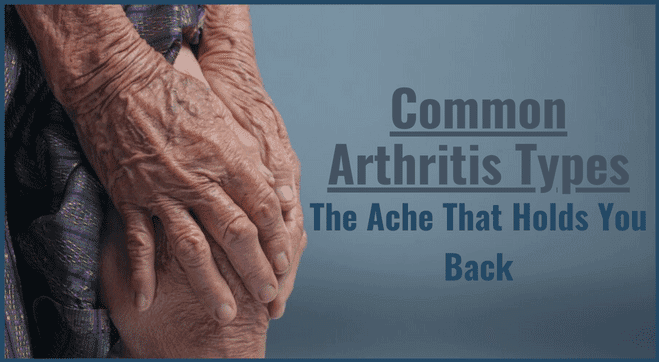Thanks to the cool air and dipping temperatures, winter is often seen as a great time for outdoor activities. That said, the cold weather can, unfortunately, cause knee and joint pain, limiting your ability to take part in all the activities that you love. In this article, we’ll explain the causes of knee joint pain in winter and explore remedies to ease your pain if your knee hurts when cold.
Is Winter Numbing Your Joints? Exploring the Link Winter and Joint Pain
Are you finding that your joints ache more during the winter months? Dive into the intriguing connection between winter and joint pain to understand why. For many people with knee and joint problems and arthritis, a drop in temperature 1 can cause pain and discomfort. Often, joint pain is usually caused due to an underlying injury or health condition such as osteoarthritis 2. But the cold weather makes pains in this area more common, especially when one spends time outdoors.
Why Knee and Joint Pain Increase When Its Cold
Have you ever wondered, “Why does my knee hurt when it’s cold?”
People can experience pain in any part of their body during any season. However, discomfort and pain due to cold weather occur mainly in the knees, hips, and ankles. You’re more likely to suffer from this type of pain if you exercise or run outdoors. The pain you feel may be a result of restricted blood flow to the muscles and joints or due to changes in pressure.
That said, while several theories try to break down the reasons for joint and knee pain during the cold season, researchers have yet to find a definitive cause. What makes this issue more complex is that some people experience sharp pain in their knees and joints when they are outside in the winter, while others don’t.
Research, however, is pointing to the fact that people with arthritis are more likely to experience joint pain 3 when it is cold.
Who Is Most Susceptible to Cold Weather Joint Pain?
Joint pain caused as a result of cold weather is most often seen in places that experience significant drops in temperature. Among these populations, those with pre-existing conditions are most likely to experience pain and discomfort. That said, joint and knee pain caused as a result of cold weather is not only limited to these groups of people.
Lowering temperatures can cause joint pain in anyone, but especially the elderly 4. One reason why the elderly may be more at risk for weather-related pain is that they may be suffering from poorer circulation. Furthermore, people who have had chronic joint and knee problems are also more susceptible to experiencing discomfort during the cold months.
Keep in mind that while you can experience pain when you exercise or step outside in the cold for long hours, you may also have some degree of leg pain in winter if you’re not moving around at all.
What Is the Cause of Knee Pain in Winter?
Experiencing cold weather joint pain? You’re not alone. Understanding the causes of knee pain in winter can be the first step toward finding relief. Some of the causes of knee pain in winter are as follows:
Change in Barometric Pressure
When the air temperature drops and there are cold winds, the barometric pressure typically lowers. This results in less air pressure on your body. This lowering of air pressure can make your tendons, scar tissue, muscles, and joints swell, which, in turn, results in pain. If you’ve noticed your feet swelling in winter, now you know why.
Stiff Joints
If your joints hurt when it is cold, that could be because the fluid in your joints, which is called synovial fluid, becomes thicker during the winter season. This makes your joints stiff, which results in pain when you try to move around.
Additionally, during cold weather days, more of your blood gets moved away from your legs and arms to keep your vital body organs safe and warm. This process, however, strips away your joints of warmth, making them stiffer and achier.
The cold temperatures can also cause your muscles to tighten up. When your muscles are not flexible, you’re more prone to injury.
Lifestyle Changes
Winter and joint pain can go hand in hand. Most times, this is because of changes to your lifestyle, which could increase the likelihood of you suffering from knee and joint pain. For instance, if you tend not to exercise at all during the winter and spend most of your time sedentary, you will likely experience more joint stiffness, which could cause pain and discomfort.
Lack of Vitamin D
Another potential cause of joint and knee pain during the winter months is the lack of vitamin D 5. Not getting enough vitamin D from the sun can ramp up muscle tenderness, which, in turn, could make you more susceptible to joint and knee pain.
If you reside in an extremely cold area, consider asking your healthcare provider if consuming vitamin D supplements would help. If you’re unsure what your vitamin D levels are, book a vitamin D test online, from the comfort of your home.
Read More: Foods to Boost Your Vitamin D Levels This Winter Season
Understanding these potential causes of knee pain in winter allows for a more targeted approach to managing and preventing discomfort. Whether through staying active, maintaining warmth, or addressing underlying conditions, taking proactive steps can help keep your knees pain-free in the coldest season.
What Can Worsen Knee Pain in Winter?
Certain factors, in particular, can exacerbate knee and joint pain in cold weather and cause foot and finger swelling in winter:
- Reduced indoor physical activity
- Prolonged exposure to the cold
- Weight gain
- Recent joint or knee injury
- Bulky clothing that limits the movement of the joints and knee
- Slippery conditions on the road
- Inadequate heating inside the house
Understanding these factors can empower you to take proactive steps to minimize knee joint pain in winter. Whether through proper warm-up routines, maintaining activity levels, or addressing underlying conditions, you can ensure your knees stay resilient even in the coldest weather.
Read More: Prevent Winter Weight Gain: 8 Effective Strategies
8 Immediate Effective Ways To Reduce Knee Joint Pain in Winter
A proactive approach is key to conquering knee joint pain in winter. Try these eight quick and effective strategies for immediate relief from joint and knee pain:
- Wear warmer clothing, including thermal leggings and gloves. If you’ve recently experienced a knee injury, add a wrap around your knee to keep it warm.
- Take a warm bath to loosen your muscles and boost blood circulation.
- While it’s not advisable to step outside when it is very cold, make it a point to exercise within your house. Try practising yoga asanas or walking indoors to take the pressure off your joints and keep your muscles flexible.
- Don’t strain yourself when bringing heavy objects indoors.
- Eat a nutritious diet that is rich in protein, fibre, and healthy fats. If you are overweight or obese, losing some weight can take pressure off your joints. Follow an arthritis diet plan rich in foods that can help reduce inflammation and support joint health. Include foods rich in omega-3 fatty acids, antioxidants, and vitamins. Avoid processed foods, sugary snacks, and excessive alcohol, as they can exacerbate inflammation.
- Get plenty of sleep since lack of sleep can often make pain worse.
- Try to keep yourself stress-free and happy.
- If simple remedies don’t seem to work, consult your doctor for medication or other treatment options.
Read More: 12 Side Effects of Room Heater Use in Winter
Treatment for Knee and Joint Pain
Some of the medical treatment options and home remedies for knee pain due to cold weather are as follows:
Medical Treatment for Knee Pain Due to Cold Weather
- Take Painkillers: If your doctor has prescribed any specific painkillers that target joint or knee pain, make sure that you consume them as per the recommended dosage and instructions to treat cold-weather joint pain.
- Seek Physical Therapy: You can consult a trained physiotherapist for physical therapy to specifically reduce joint and knee pain. Physical therapy, which involves the repetition of specific exercises over a period of days or weeks, can help improve muscle and joint flexibility, range of motion, and circulation.
- Get Orthopaedic Massages: An orthopaedic massage that is done by an expert can help lower or at least ease joint- and knee-related pain.
Home Remedies for Knee Pain Due to Cold Weather
- Stay Hydrated: Drinking adequate water can help keep your joints well-lubricated. This, in turn, can help improve overall flexibility, reducing the risk of injuries. Attempt to drink a minimum of eight glasses of water daily, if not more.
- Maintain a Healthy Weight: People who carry excess weight may have a higher risk of experiencing joint pain. So, try to retain a healthy weight before the winter months to reduce your chances of experiencing weather-related aches and pains.
- Use a Knee Brace: If you are experiencing any swelling or pain in the knee, use a knee brace to reduce knee pain in cold weather.
Lifestyle Changes To Make
Some of the changes you can make to reduce the likelihood of having knee pain during the cold months include:
- Do a few warm-up exercises before you step out in the cold to improve your circulation and joint flexibility.
- Dress in layers you can effortlessly remove instead of wearing something bulky that could put additional strain on your joints.
- If you are running outdoors, don’t come to a sudden stop. Instead, slow down to a jog and then walk for a bit before you stop.
- Bring warm clothing, like socks and gloves, if you are going to be exposed to cold working environments.
What Should You Do If Your Leg Still Hurts in Cold Weather?
Despite all of these tips, if you find that your knee and joints are still aching during the winter months, make sure to speak to an orthopedist or physical therapist also it’s critical to investigate testing alternatives to determine the root reason. Here are several diagnostic tests that can help you figure out what’s causing your pain:
Imaging Tests:
- X-Rays: An X-ray can offer detailed images of your bones and assist in the diagnosis of problems such as fractures, joint degeneration, and other structural abnormalities.
- MRI (Magnetic Resonance Imaging): This imaging technique is very good for diagnosing soft tissue injuries, nerve disorders, and vascular problems that may be causing leg pain.
Nerve Conduction Studies:
- EMG/NCS (Electromyography/Nerve Conduction Studies): These tests assess the electrical activity of muscles as well as the speed of nerve impulses. They can detect nerve compression or injury that may be causing leg pain.
Blood Tests:
- Complete Blood Count (CBC): CBC test can aid in the identification of infections or systemic diseases that may be causing leg pain.
- Inflammatory markers (for example, ESR or CRP): Elevated levels may indicate inflammation, aiding in the diagnosis of illnesses such as arthritis or autoimmune disorders.
Additionally, you can also book an arthritis profile test to know if you have any underlying health conditions that may be exacerbating the pain.
Conclusion
Joint and knee pain can cast a shadow over the joy of the season. Understanding the intricate links between winter and joint discomfort empowers us to take proactive steps towards relief. Amidst lifestyle adjustments and immediate strategies for pain reduction, it’s crucial to consider comprehensive health insights. Explore the options like Thyrocare Health Packages and opting for convenient Online Blood Tests at-home, will provide you a deeper understanding of your body’s needs
Disclaimer
The information listed here is strictly for educational purposes and is not intended to offer personal medical advice. Do consult your physician for any questions you may have regarding a medical condition. It’s not advised to disregard professional medical advice or delay in seeking it because of any information listed here. The Nutrition Source does not recommend or endorse any products.
Sources
Ref Links:
- Exposure to cold and respiratory tract infections- Pubmed
- Winter Cardiovascular Diseases Phenomenon- NCBI
- Cold heart facts: Why you need to watch out in winter – Heart Org
- Are the Current Thresholds, Indicators, and Time Window for Cold Warning- NCBI
- Vitamin D Deficiency and Risk for Cardiovascular Disease- NCBI
- Effect of cold spells and their modifiers- NCBI












